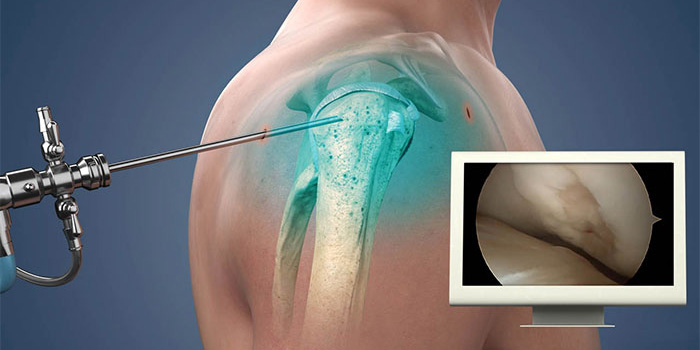
Shoulder - Arthroscopy and Sport Injury Specialist in Mumbai
Shoulder Arthroscopy
Dr. Aditya Pawaskar is one of top notch shoulder arthroscopy Surgeon and Sports Injuries Specialist in Mumbai. With his extensive experience in orthopedics, he provides excellent care and effective treatments for patients with shoulder and knee problems.
Shoulder arthroscopy is a minimally invasive surgical procedure used to diagnose and treat a wide range of shoulder joint issues. It involves the use of a small camera called an arthroscope, which is inserted into the shoulder joint through tiny incisions. This allows the surgeon to visualize and access the structures inside the shoulder, such as the rotator cuff, labrum, and ligaments, without the need for large incisions.
Indications for Shoulder Arthroscopy:
Shoulder arthroscopy is performed to address various conditions and injuries, including:
- Rotator Cuff Tears: Arthroscopy can be used to repair partial or complete tears of the rotator cuff tendons.
- Labral Tears: Tears in the labrum, a cartilage rim around the shoulder socket, can be repaired or trimmed.
- Impingement Syndrome: Arthroscopy can be used to remove bone spurs or inflamed tissue causing shoulder impingement.
- Shoulder Instability: For recurrent shoulder dislocations or instability, arthroscopy can help repair and stabilize the joint.
- Frozen Shoulder (Adhesive Capsulitis): Arthroscopy can help release tight or thickened tissues that contribute to limited shoulder movement.
- Biceps Tendon Issues: Inflammation, fraying, or dislocation of the biceps tendon can be treated using arthroscopy.
- SLAP Tears: Superior Labrum Anterior to Posterior (SLAP) tears, involving the top part of the labrum, can be repaired.
Advantages of Shoulder Arthroscopy:
- Minimally Invasive: Smaller incisions result in less tissue damage, reduced pain, and quicker recovery compared to open surgery.
- Faster Recovery: Shorter hospital stays and less post-operative discomfort allow for a quicker return to normal activities.
- Diagnostic Accuracy: Arthroscopy provides detailed visualization of the joint, aiding in accurate diagnosis.
- Reduced Complications: The risk of infection and other complications is generally lower compared to open surgery.
Sports Prone to Shoulder Arthroscopy and Injury Risks:
Shoulder arthroscopy may be required for injuries or conditions affecting the shoulder joint. In India, the following sports may be associated with a higher risk of shoulder issues necessitating arthroscopic procedures:
- Cricket: Fast bowlers and players involved in throwing actions may be prone to shoulder injuries requiring arthroscopy.
- Badminton:The overhead motions and repetitive arm movements in badminton can contribute to shoulder problems.
- Tennis: The overhead serving and repetitive arm motions in tennis may lead to shoulder injuries requiring arthroscopic intervention.
- Volleyball: Frequent overhead hitting and blocking actions in volleyball may pose a risk of shoulder issues.
- Swimming: The repetitive arm movements in swimming, especially in competitive strokes, can contribute to shoulder injuries.
- Weightlifting: Heavy lifting in weightlifting, especially with improper technique, may lead to shoulder problems requiring arthroscopy.
- Basketball: Jumping and the potential for collisions in basketball can contribute to shoulder injuries.
- Gymnastics: The intense upper body movements and landings in gymnastics may pose a risk of shoulder issues.
- Throwball: Overhead throwing actions in throwball may increase the risk of shoulder injuries.
- Wrestling: Wrestling, with its intense physical contact and potential for awkward falls, can contribute to shoulder problems.
Consult with Dr. Aditya Pawaskar, a Sports Medicine Specialist in Mumbai, to determine the most appropriate treatment for Knee & shoulder injuries based on individual cases and the latest medical advancements.
